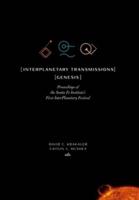Publisher's Synopsis
Eight different production lots of a commercial perfluoropolyether (PFPE) based on hexafluoropropene oxide (HFPO) were applied to polished metal surfaces by spinning. One of the lots repeatedly dewetted from a clean 440C steel surface, forming droplets on the surface, whereas the other seven did not dewet. This dewetting phenomenon also repeatedly occurred on 2024 aluminum and 1018 steel, but not on copper or gold. Fourier transform infrared microspectroscopy (mu-FTIR) was used to determine thickness and uniformity of the PFPE films. The dewetting lot was found to dewet from 440C steel at a film thickness greater than 520 A. A portion of the dewetting lot was heated at 316 C for 12 days in the presence of oxygen and M-50 steel. This fluid did not dewet. Sequentially, samples of the dewetting lot were filtered either with an alumina or a silica cartridge which can remove polar impurities. Neither of the filtered samples dewetted from 440C steel. It was concluded that an unknown impurity, both thermally labile and polar, present at very low concentration and undetected by our analytical techniques (FTIR, proton NMR, or F-19 NMR), was responsible for the dewetting phenomenon. Shogrin, Bradley and Jones, William R., Jr. and Herrera-Fierro, Pilar Glenn Research Center NASA-TM-106964, E-9720, NAS 1.15:106964 RTOP 616-00-00...












